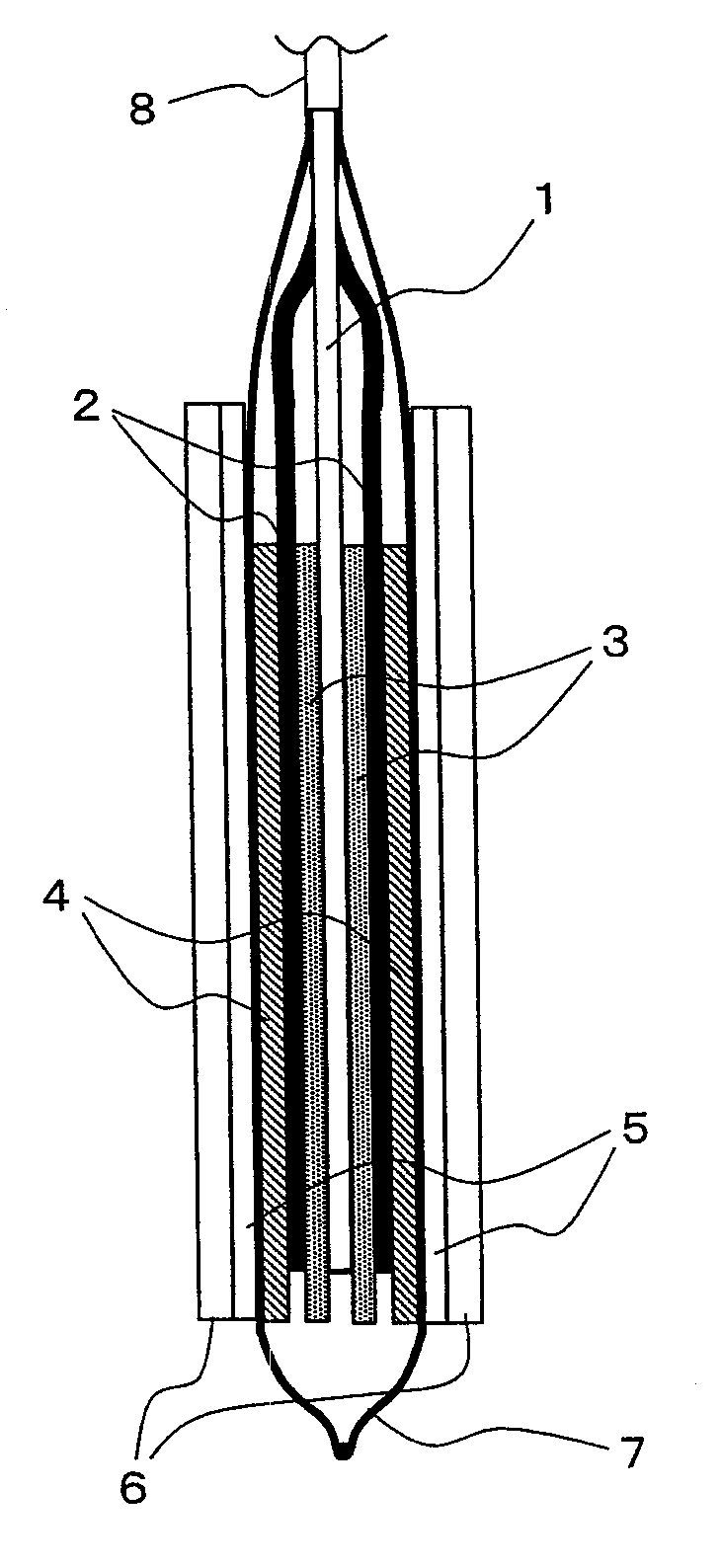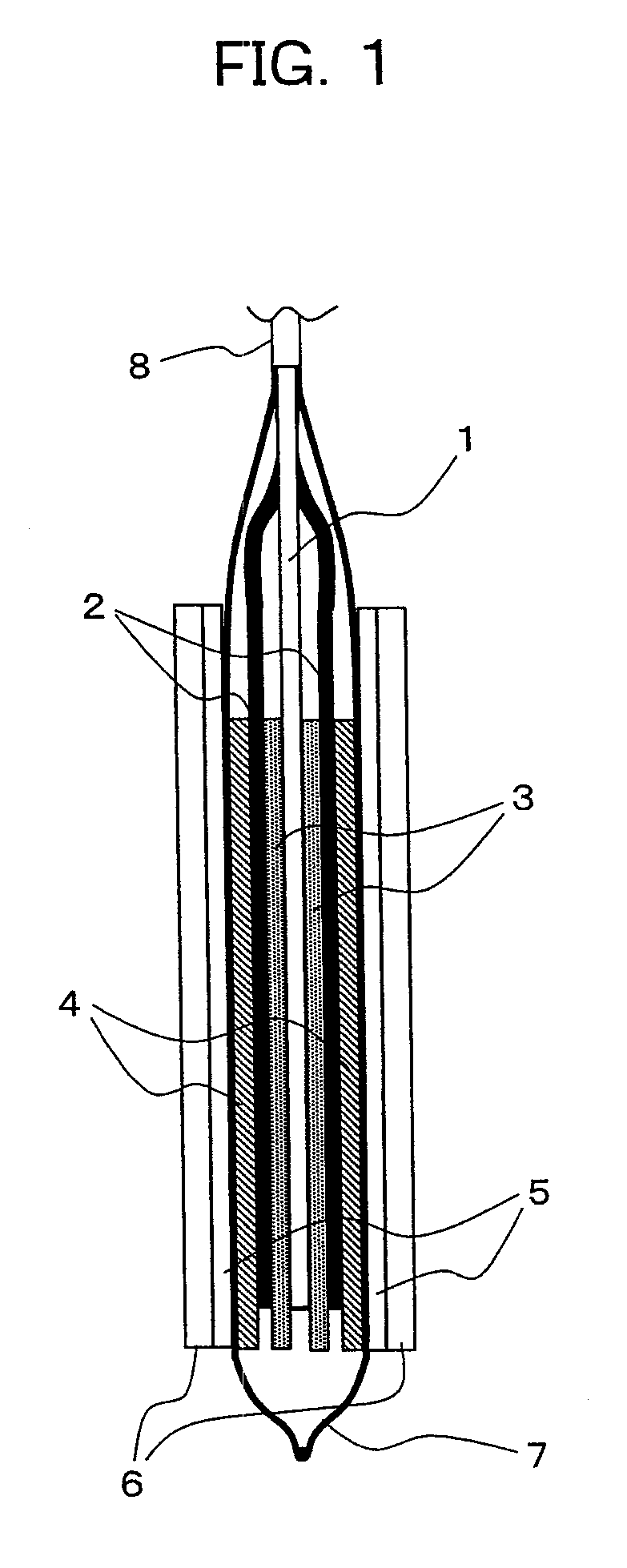Lithium secondary battery
a secondary battery and lithium technology, applied in secondary cell servicing/maintenance, secondary cell details, electrochemical generators, etc., can solve the problems of serious deterioration of cycle characteristics, difficulty in satisfying any one solvent in all these characteristics, and inability to develop ideal electrolyte solutions superior in all these characteristics. , to achieve the effect of improving cycle characteristics and suppressing the amount of gas evolved
- Summary
- Abstract
- Description
- Claims
- Application Information
AI Technical Summary
Benefits of technology
Problems solved by technology
Method used
Image
Examples
example 1-1
[0429]A base electrolyte solution (1-I) was prepared by dissolving an electrolyte LiPF6 at a concentration of 1 mol / L in a mixed solvent (volume ratio 1:3) of ethylene carbonate (EC) as a cyclic carbonate, and ethylmethyl carbonate (EMC) as a chain carbonate. To this base electrolyte solution (1-I) were added vinylethylene carbonate as vinylethylene carbonate compound and vinylene carbonate as vinylene carbonate compound so that the former represented 2 weight % and the latter also represented 2 weight % of the non-aqueous electrolyte solution, thus a non-aqueous electrolyte solution being obtained.
[0430]A lithium secondary battery was prepared by the method described previously using the non-aqueous electrolyte solution obtained, and 4.4 V cycle characteristics were evaluated. The results are shown in Table 1-1. In the Table 1-1, the numerical values shown in parentheses for the columns of vinylethylene carbonate compound, vinylene carbonate compound, and electrolyte and non-aqueou...
example 1-2
[0431]To the base electrolyte solution (1-I) were added vinylethylene carbonate as vinylethylene carbonate compound and vinylene carbonate as vinylene carbonate compound so that the former represented 0.5 weight % and the latter represented 1 weight % of the non-aqueous electrolyte solution, thus a non-aqueous electrolyte solution being obtained. A lithium secondary battery was prepared by the method described previously using the non-aqueous electrolyte solution obtained, and 4.4 V cycle characteristics were evaluated. The results are shown in Table 1-1.
example 1-3
[0432]To the base electrolyte solution (1-I) were added vinylethylene carbonate as vinylethylene carbonate compound and vinylene carbonate as vinylene carbonate compound so that the former represented 1 weight % and the latter represented 1 weight % of the non-aqueous electrolyte solution, thus a non-aqueous electrolyte solution being obtained. A lithium secondary battery was prepared by the method described previously using the non-aqueous electrolyte solution obtained, and 4.4 V cycle characteristics were evaluated. The results are shown in Table 1-1.
PUM
 Login to View More
Login to View More Abstract
Description
Claims
Application Information
 Login to View More
Login to View More - R&D
- Intellectual Property
- Life Sciences
- Materials
- Tech Scout
- Unparalleled Data Quality
- Higher Quality Content
- 60% Fewer Hallucinations
Browse by: Latest US Patents, China's latest patents, Technical Efficacy Thesaurus, Application Domain, Technology Topic, Popular Technical Reports.
© 2025 PatSnap. All rights reserved.Legal|Privacy policy|Modern Slavery Act Transparency Statement|Sitemap|About US| Contact US: help@patsnap.com



